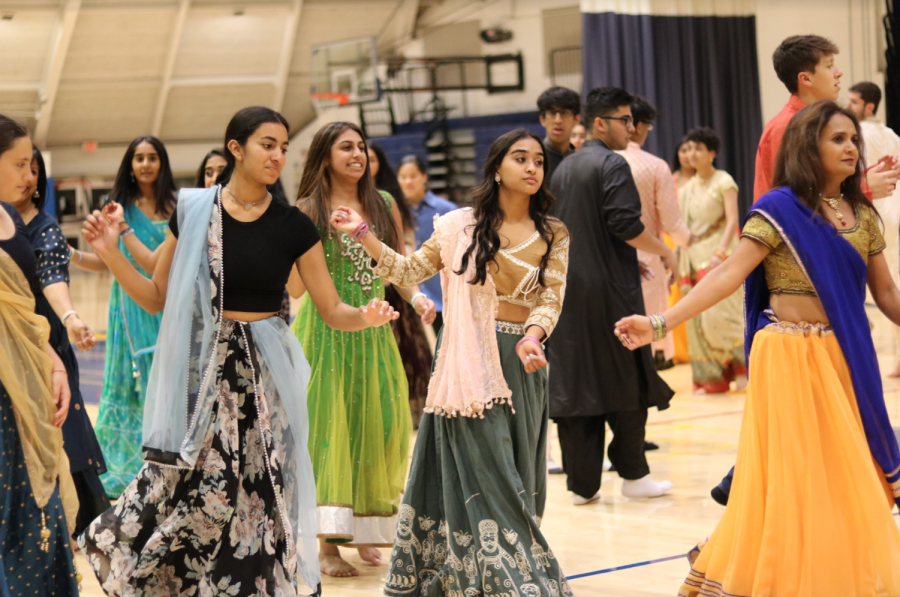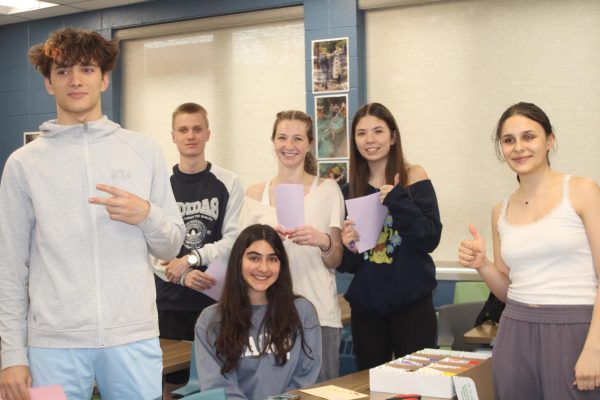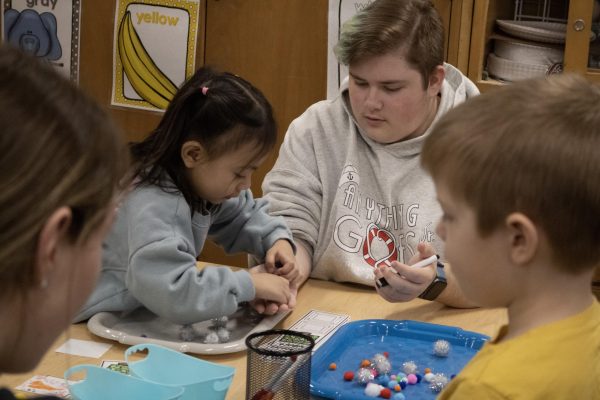Sharing South Asian culture, experiences at SASA
GARBA NIGHT: SASA members along with community members celebrate the Hindu Holiday Navratri by dancing around the goddess Ambika (not pictured). photo by Nur Yalinbas
December 16, 2022
When walking into Room 2139, known as The Emerald City, anyone can hear the voices of students buzzing with energy and making connections. The South Asian Student Association (SASA) creates a sense of community for its members in addition to teaching and honoring South Asian culture, senior Aziza Saiyed, SASA board member, said.
In addition to community, SASA values diversity, Sejal Schullo, SASA Sponsor and Social Studies Teacher, said. SASA celebrates the differences between South Asian students and aims to make them known. Students are able to learn about other people’s stories and share their own, Schullo explained.
“[One can] look at two people who [are] Indian and their experiences are very different,” Schullo said. “Having the space and the time at [SASA] meetings allows [members] to learn from each other. [Members can learn] that not all of them have the same experiences as South Asians.”
Alongside sharing their own personal experiences, SASA members can depend on one another, building a team-like environment through the celebrations that they plan as well, freshman Zenia Babool, SASA member, explained. As a team, SASA organized and managed Garba Night, a SASA event that took place on Nov. 5, Babool said. Garba is a celebration of the Hindu Holiday Navratri, which honors women and their strength, Schullo explained. For Schullo, Garba night was her favorite event that SASA participated in so far this year.
“There was a culminating feeling,” Schullo said, “[Garba] bridged [our club to the school] because [the] community was involved. It was nice for us and the student body to see that a SASA event was attended by both groups.”
The event allowed the club to work together due to the challenge of making sure the event ran smoothly which further bonded the group, Schullo said. Garba is just one of the events that SASA puts together. As a club, SASA members visit Indian restaurants, host group events like Friendsgiving, and take part in a World Cultures Fest, Schullo said. During the World Culture’s Fest last year, SASA members brought in different South Asian foods, such as Pani Puri, crispy fried dough balls stuffed with different foods, Jonathan Thomas, senior SASA leader, described.
“[The World Culture’s fest] was really fun because people brought different [food from their cultures],” Thomas said, “[The event was special because] I bought something from my Indian culture.”
The opportunity to gain knowledge about South Asian culture is one of the main reasons Thomas joined SASA. Practicing a different religion than most South Asian students, he wanted to explore religious aspects of South Asian culture that he had not experienced before.
“I wanted to learn more about the [South Asian] culture because I’m Catholic, and you won’t find a lot of Indians [who] are Catholic,” Thomas said. “I wanted to learn more about Hinduism and other [South Asian] religions.”
Schullo agreed to become the sponsor to SASA in hopes that it would bring together the South Asian community at GBS and that it would become a space for students to feel a sense of belonging, Schullo said.
[I wanted to help South Asian students] feel like they had a space and that they were part of [a community at GBS],” Schullo said. “Having a club that represents part of their identity and what’s important to them [is why I agreed to be the sponsor].”
During meetings, members also spend time educating club members on South Asian culture through games, Thomas said. SASA has given the chance for Thomas to become a leader, too, which has helped him grow from his freshman year to his senior year. Through his newfound leadership, he has been able to make connections with other seniors and take more responsibility with underclassmen, Thomas said.
“I’ve always been nervous and shy growing up, so being a leader, taking on that role, [and] putting that responsibility on [myself] has broken me out of that shell,” Thomas said.














